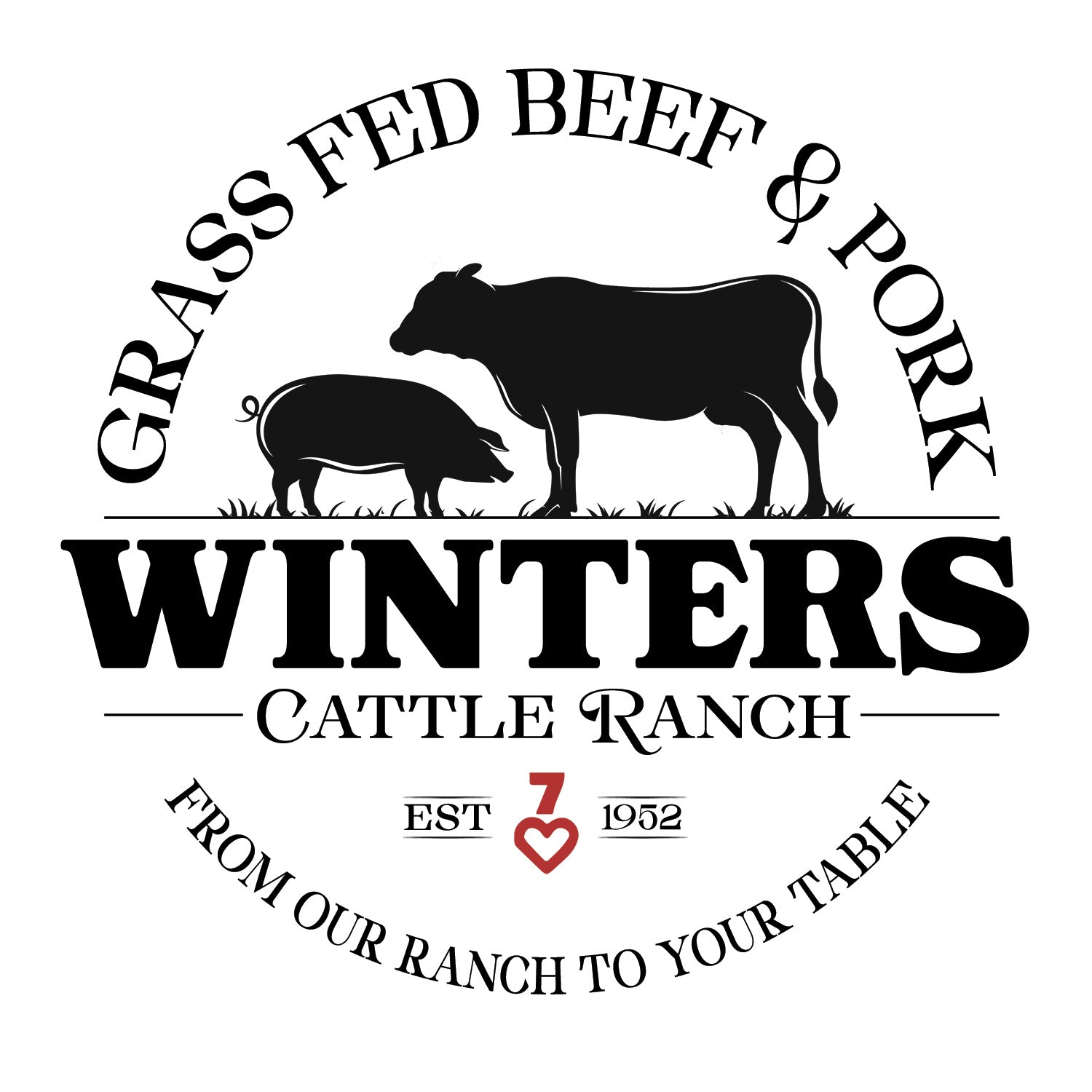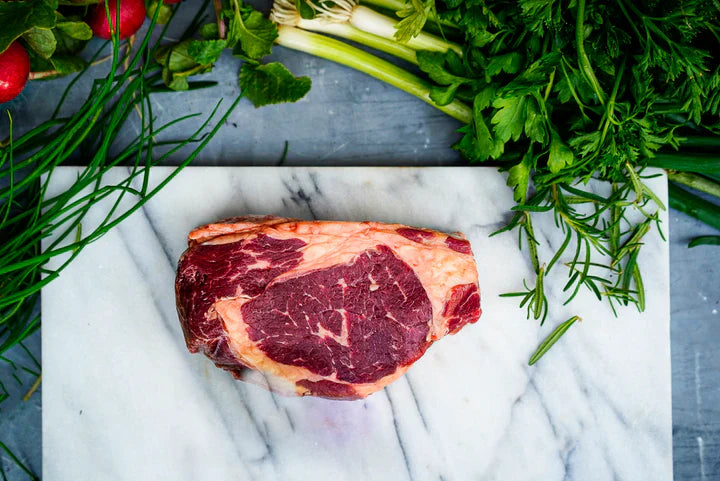The Distinctive Taste of Grass-Fed Beef
If you’ve ever taken a bite of grass-fed beef and noticed that it tastes richer, earthier, or even slightly “wild,” you’re not imagining it. Grass-fed beef truly has a different flavor compared to conventional grain-fed varieties. This difference starts long before the meat reaches your plate; it begins on the pasture, with what the cattle eat and how they live.
In Colorado, where ranching traditions run deep and sustainability matters, many families are discovering that grass-fed beef offers not only a healthier option but a more authentic taste of the land itself.
The Role of Diet: Pasture vs. Feedlot
The most significant factor behind the flavor of grass-fed beef is the animal’s diet.
-
Grass-fed cattle graze on natural pasture throughout most of their lives. Their diet includes grasses, wild herbs, and legumes.
-
Grain-fed cattle, in contrast, spend their final months in feedlots eating corn, soy, and grain-based mixtures designed to speed up weight gain.
Because of this, grass-fed beef often develops a more complex flavor profile, sometimes described as “earthy,” “grassy,” or “beefier.” Grain-fed beef, by comparison, tends to have a milder, sweeter taste due to the high starch content in grains.
In simple terms: the more natural the diet, the more distinct the taste.
Fat Content and Marbling Differences
Fat plays a crucial role in how beef tastes, smells, and feels in your mouth. The type of fat, not just the amount, changes dramatically between grass-fed and grain-fed cattle.
Key Differences:
-
Grass-fed beef is typically leaner, meaning less intramuscular fat or marbling.
-
The fat in grass-fed beef has a higher proportion of omega-3 fatty acids and conjugated linoleic acid (CLA), both associated with health benefits.
-
The fat in grain-fed beef contains more omega-6 fatty acids, which contribute to its buttery texture and sweeter flavor.
This difference means grass-fed beef delivers a cleaner, more robust flavor, while grain-fed beef provides a softer, more buttery mouthfeel. Some people describe grass-fed beef as having a “real meat” taste, slightly gamey, but deeply satisfying once your palate adjusts.
Influence of Terroir: Flavor from the Land
Just like wine, beef reflects the terroir, the natural environment in which it’s raised. The type of grasses growing in Colorado’s high plains, the minerals in the soil, and the changing seasons all influence how the meat tastes.
Cattle grazing on Colorado pastures eat a variety of native grasses and wild plants, each adding subtle notes to the final flavor. That’s why grass-fed beef from local ranches often carries a uniquely regional taste, unlike mass-produced grain-fed beef from large feedlots.
When you buy grass-fed beef in Colorado, you’re not just buying meat; you’re tasting a piece of the local landscape.
The Science Behind the Flavor
Beyond the romantic image of open pastures, science also plays a big role in why grass-fed beef tastes different.
Chemistry of Flavor Compounds
Grass-fed beef contains higher levels of certain volatile compounds, such as aldehydes and ketones derived from plant oils. These compounds are responsible for flavors described as:
-
Nutty
-
Herbal
-
Savory
-
Slightly metallic or tangy
Meanwhile, grain-fed beef develops different compounds, mainly from corn oils, that make it taste sweeter and milder.
When cooked, these differences become even more noticeable. The Maillard reaction (the browning process during cooking) interacts differently with the fatty acids in grass-fed beef, leading to deeper, richer, and slightly more complex aromas.
The Role of Aging in Grass-Fed Beef Flavor
Another reason grass-fed beef from local Colorado ranches stands out is the aging process.
At ranches like Winters Ranch Meats Inc., beef is often dry-aged, a traditional method where meat hangs in a temperature-controlled room for weeks. This process allows natural enzymes to break down muscle fibers and concentrate flavor.
Dry-Aging vs. Wet-Aging
-
Dry-aging enhances tenderness and develops nutty, umami-rich flavors.
-
Wet-aging, common in supermarket beef, uses vacuum-sealed bags that retain moisture but produce a milder taste.
That’s why dry-aged grass-fed beef tastes richer, denser, and more aromatic, a premium experience that highlights the care and craft behind every cut.
Texture: Leaner but Satisfying
Because grass-fed cattle are more active and grow more slowly, their muscles are naturally firmer. As a result, grass-fed beef can feel denser and chewier than grain-fed beef.
However, that doesn’t mean it’s tough; it’s simply different in structure. When cooked properly (using lower temperatures and shorter times), the result is tender, flavorful meat with a satisfying bite.
This is especially true for Colorado ranches that prioritize ethical handling and slow, natural growth cycles. The result is meat that feels authentic, a true farm-to-table experience.
Health Benefits Influence Taste Perception
Interestingly, many people report that once they switch to grass-fed beef for health reasons, their taste preferences shift as well.
Grass-fed beef is:
-
Higher in omega-3 fatty acids
-
Lower in saturated fat
-
Rich in antioxidants like vitamin E and beta-carotene
Because the fat is more natural and less processed, the flavor feels cleaner and lighter, even though it’s deeply satisfying. Over time, your palate begins to recognize the quality difference between real pasture-raised meat and industrially finished alternatives.
Cooking Grass-Fed Beef the Right Way
If you’ve ever found grass-fed beef a little too firm or less juicy than expected, it’s likely a matter of technique. Because of its lower fat content, it requires gentler cooking.
Here are a few simple tips for bringing out the best in your grass-fed beef:
-
Don’t overcook it. Aim for medium-rare to medium.
-
Use a lower heat setting. Grass-fed beef cooks about 30% faster.
-
Add moisture. Marinate or baste to help retain juiciness.
-
Let it rest. Resting allows juices to redistribute for a more tender bite.
Once you get the hang of it, grass-fed beef offers a clean, bold flavor that pairs perfectly with simple seasoning, just salt, pepper, and perhaps a touch of garlic.
Local Matters: Colorado’s Grass-Fed Advantage
Colorado’s climate and landscape provide ideal conditions for raising grass-fed cattle. Wide open pastures, clean mountain air, and a strong ranching heritage make the state a leader in sustainable beef production.
Buying locally not only ensures freshness but also supports family-owned ranches that prioritize ethical practices and transparency. Every bite connects you to a network of farmers who care about animal welfare, soil health, and flavor integrity.
When you choose Colorado-raised grass-fed beef, you’re choosing quality over quantity, a decision that benefits both your taste buds and your community.
Why the Taste Difference Matters
The flavor difference between grass-fed and grain-fed beef isn’t just about preference; it reflects values.
-
For some, the appeal lies in health and nutrition.
-
For others, it’s about environmental responsibility and supporting local ranchers.
-
But for many, it’s about taste that tells a story, a story of open pastures, honest care, and real food.
Grass-fed beef reminds us that true flavor doesn’t come from additives or shortcuts. It comes from nature, patience, and respect for the animal.
Bringing Your Family’s Mealtime Goals to Life Starts Here
At Winters Ranch Meats Inc, that story continues every day. Proudly based in Colorado Springs, CO, the ranch specializes in dry-aged, grass-fed Black Angus beef raised with care and tradition. Every order reflects a commitment to freshness, quality, and ethical ranching.
Whether you’re stocking your freezer or planning for wholesome family dinners, Winters Ranch delivers premium cuts that celebrate the true taste of Colorado.
Contact us today to place your order or learn more about our beef options.
Winters Ranch Meats Inc, Website: https://winterscattleranch.com/ | Address: Colorado Springs, CO, USA

